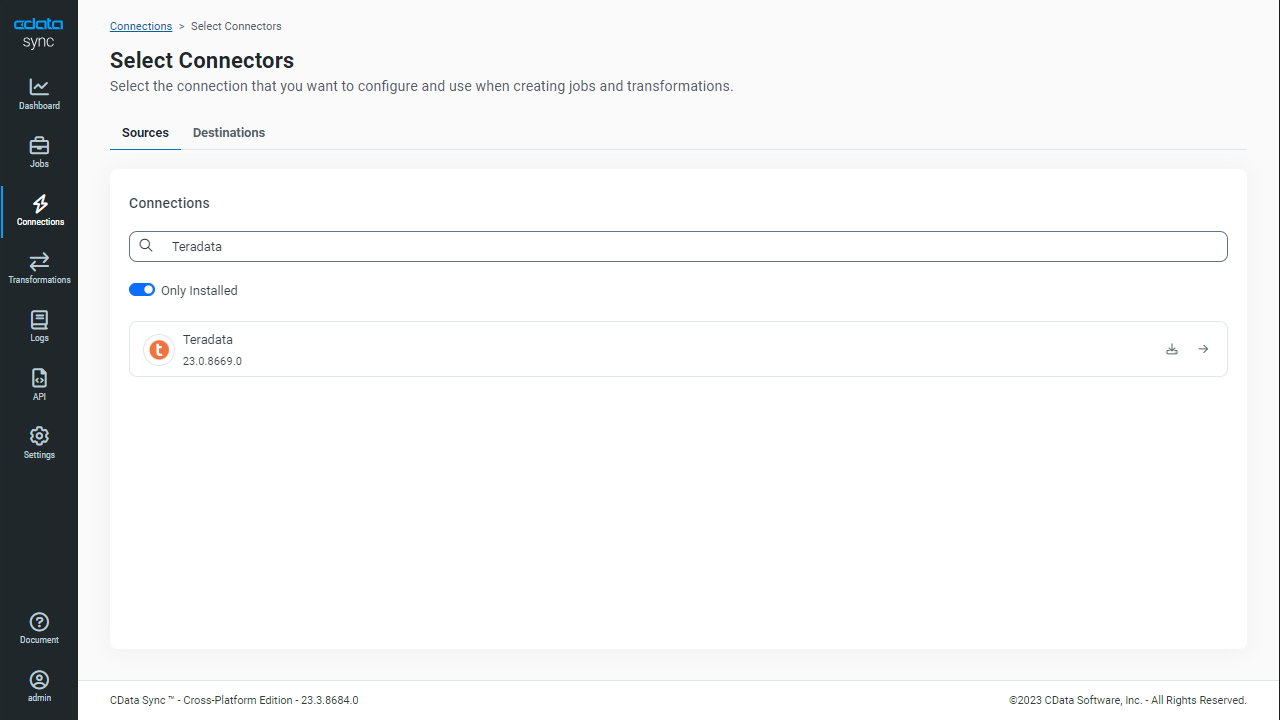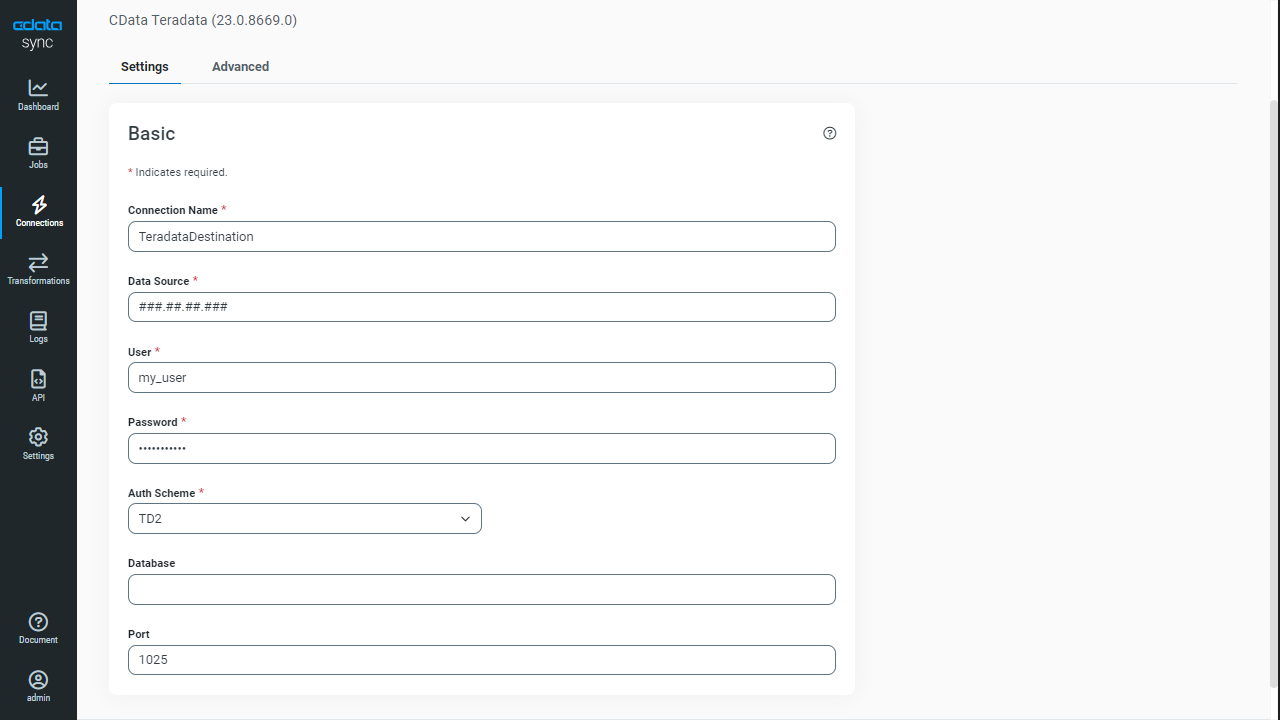Discover how a bimodal integration strategy can address the major data management challenges facing your organization today.
Get the Report →Automated Jira Data Replication to Teradata
Use CData Sync to Customize and automate Jira data replication to Teradata.
Always-on applications rely on automatic failover capabilities and real-time data access. CData Sync integrates live Jira data into your Teradata instance, allowing you to consolidate all of your data into a single location for archiving, reporting, analytics, machine learning, artificial intelligence and more.
About Jira Data Integration
CData simplifies access and integration of live Jira data. Our customers leverage CData connectivity to:
- Gain bi-directional access to their Jira objects like issues, projects, and workflows.
- Use SQL stored procedures to perform functional actions like changing issues status, creating custom fields, download or uploading an attachment, modifying or retrieving time tracking settings, and more.
- Authenticate securely using a variety of methods, including username and password, OAuth, personal access token, API token, Crowd or OKTA SSO, LDAP, and more.
Most users leverage CData solutions to integrate Jira data with their database or data warehouse, whether that's using CData Sync directly or relying on CData's compatibility with platforms like SSIS or Azure Data Factory. Others are looking to get analytics and reporting on live Jira data from preferred analytics tools like Tableau and Power BI.
Learn more about how customers are seamlessly connecting to their Jira data to solve business problems from our blog: Drivers in Focus: Collaboration Tools.
Getting Started
Configure Teradata as a Replication Destination
Using CData Sync, you can replicate Jira data to Teradata. To add a replication destination, navigate to the Connections tab.
- Click Add Connection.
- Select Teradata as a destination.
![Configure a Destination connection to Teradata.]()
- Enter the necessary connection properties. To connect to Teradata, set the following connection properties:
- Connection Name: Enter a connection name of your choice.
- Data Source: Enter either the Teradata server name, the database computer (DBC) username, or the Teradata Director Program Id (TDPID).
- User: Enter the username that you use to authenticate to your Teradata account.
- Password: Enter the password that you use to authenticate to your Teradata account.
- Auth Scheme: Select the authentication scheme. TD2 is the default scheme.
- Database: Enter the name of your Teradata database.
Note: If you do not specify a database, CData Sync connects to your default database.
- Port: Enter the port number for your Teradata server. The default port value is 1025.
- Click Test Connection to ensure that the connection is configured properly.
![Configure a Destination connection.]()
- Click Save Changes.
Configure the Jira Connection
You can configure a connection to Jira from the Connections tab. To add a connection to your Jira account, navigate to the Connections tab.
- Click Add Connection.
- Select a source (Jira).
- Configure the connection properties.
To connect to JIRA, provide the User and Password. Additionally, provide the Url; for example, https://yoursitename.atlassian.net.
![Configure a Source connection (Salesforce is shown).]()
- Click Connect to ensure that the connection is configured properly.
- Click Save Changes.
Configure Replication Queries
CData Sync enables you to control replication with a point-and-click interface and with SQL queries. For each replication you wish to configure, navigate to the Jobs tab and click Add Job. Select the Source and Destination for your replication.

Replicate Entire Tables
To replicate an entire table, click Add Tables in the Tables section, choose the table(s) you wish to replicate, and click Add Selected Tables.

Customize Your Replication
You can use the Columns and Query tabs of a task to customize your replication. The Columns tab allows you to specify which columns to replicate, rename the columns at the destination, and even perform operations on the source data before replicating. The Query tab allows you to add filters, grouping, and sorting to the replication.
Schedule Your Replication
In the Schedule section, you can schedule a job to run automatically, configuring the job to run after specified intervals ranging from once every 15 minutes to once every month.

Once you have configured the replication job, click Save Changes. You can configure any number of jobs to manage the replication of your Jira data to Teradata.









